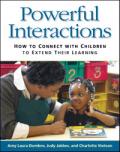Positive classroom environments support teaching science
By Peggy Ashbrook
Posted on 2016-01-23
 Science teaching is only a part of the work of early childhood science educators. Supporting children’s development of social-emotional skills and executive function are foremost in every activity we engage children in.
Science teaching is only a part of the work of early childhood science educators. Supporting children’s development of social-emotional skills and executive function are foremost in every activity we engage children in.
When children feel safe in the class is when they can exercise their curiosity and ask questions that lead to looking for answers and thinking about what they find out. To learn more about making all children welcome in my classroom I read several books, the notes from one book club and participate in another. Colleagues also sent links to articles that guide early childhood educators in creating positive classroom climates.
Here are some resources about supporting all children. I hope you will continue to expand my understanding by posting additional resources and links to articles.
Book discussions:
 An online blog book study group discussing What if Everybody Understood Child Development? by Rae Pica took place on Beyond the Pages, beginning on August 5, 2015, part of the Early Childhood and Youth Development blog from Dakota County Technical College, A member of the Minnesota State Colleges and Universities System. Read the book and see the archived blog posts here.
An online blog book study group discussing What if Everybody Understood Child Development? by Rae Pica took place on Beyond the Pages, beginning on August 5, 2015, part of the Early Childhood and Youth Development blog from Dakota County Technical College, A member of the Minnesota State Colleges and Universities System. Read the book and see the archived blog posts here.
 The Diversity & Equity Education for Adults NAEYC Interest Forum began a virtual book club as an informal, 13-week exploration of the question raised by the classic book, Anti-Bias Education for Young Children and Ourselves, by Louise Derman-Sparks & Julie Olsen Edwards: What can we do to raise the next generation of young people who know and are proud of who they are, are able to be in equitable relationship with others, can recognize and name unfairness in the world around them, and are ready to take action to address it?
The Diversity & Equity Education for Adults NAEYC Interest Forum began a virtual book club as an informal, 13-week exploration of the question raised by the classic book, Anti-Bias Education for Young Children and Ourselves, by Louise Derman-Sparks & Julie Olsen Edwards: What can we do to raise the next generation of young people who know and are proud of who they are, are able to be in equitable relationship with others, can recognize and name unfairness in the world around them, and are ready to take action to address it?
The discussion continues into February–read and join in the open discussion on the Facebook page. (You can read a Q & A session with the authors on the NAEYC website.)
 Another book I’ve found helpful:
Another book I’ve found helpful:
Powerful Interactions: How to connect with children to extend their learning by Amy Laura Dombro, Judy Jablon, & Charlotte Stetson. There is a free, archived webinar by one of the authors, Judy Jablon at the Early Childhood Investigations. The Boston -AEYC Old Colony Chapter and Bridgewater State University host a webpage discussion with insightful comments about using powerful interactions. Is there an open online book discussion group for this book?
Articles that I learned from:
 Children Together, a community based, non-profit organization committed to increasing opportunities for the inclusion of children with disabilities and their families in quality early childhood programs in the city of Alexandria, Virginia, shares a page of links and resources.
Children Together, a community based, non-profit organization committed to increasing opportunities for the inclusion of children with disabilities and their families in quality early childhood programs in the city of Alexandria, Virginia, shares a page of links and resources.
The National Association for the Education of Young Children has a robust list of resources about children’s play; the importance and value for learning. (See Walter Drew’s insights about how play strengthens the essential developing capacities of young children on the Beyond the Pages blog.)
The January 6, 2016 nprEd post by Megan Anderson, “How To Help Kids In Poverty Adjust To The Stability Of School After Break,” helps us consider children’s economic situation, quoting teacher Sonya Romero Smith: “If school is the place where you’re supposed to get knowledge and realize what the world has to offer,” she says, “it should be the safest place, where you have the ability to show your greatness.”
Washington Post article on July 28, 2015, “Are you holding your own daughter back? Here are 5 ways to raise girls to be leaders,” by Amy Joyce. (See Diane Levin’s insights about “How & Why Media & Marketers Promote “Pretty Faces” to Young Girls and What We Can Do about It” on the Beyond the Pages blog.)
Powerful Interactions Begin with You by Amy Dombro, Judy Jablon, and Charlotte Stetson. TYC 4(1): 12-14. This article is a helpful introduction to the book, Powerful Interactions.
This short list is just a few of the resources that are useful to early childhood educators for learning about how to support all children. Post your additional resources and links to articles!
Disclaimer: The views expressed in this blog post are those of the author(s) and do not necessarily reflect the official position of the National Science Teaching Association (NSTA).


